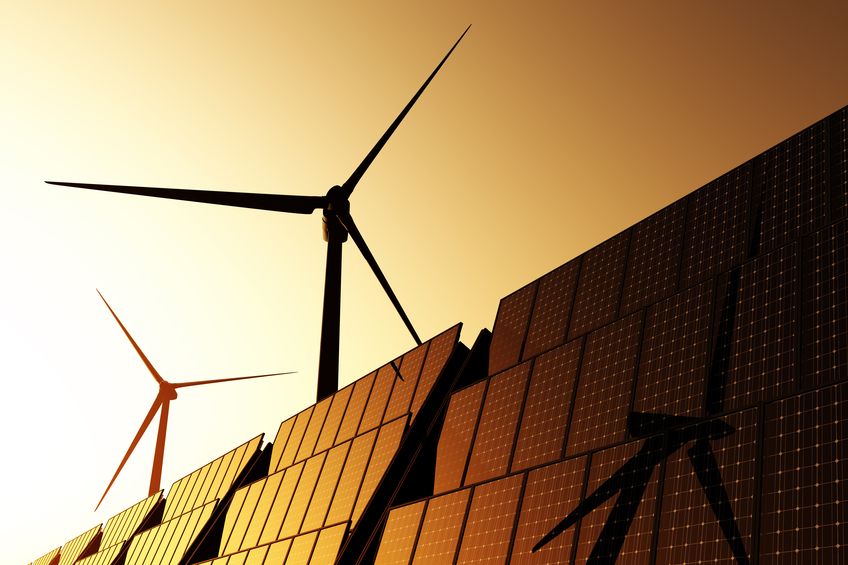Wind and solar power will not replace fossil fuels—oil, coal and natural gas—any time soon; not in twelve or 30 years, and likely not in anyone’s lifetime who is alive today. The pursuit of solar and wind power also comes with a steep price, not just in higher utility bills and taxpayer-financed subsidies, but to people, wildlife and the balance of nature itself.
The proposed Gemini solar farm in southern Nevada, near Las Vegas, is the latest example of the environmental tension resulting from this renewable energy.
Solar “farms” take up a lot of land. In Gemini’s case, more than 7,000 acres, which would be the largest in the country and equivalent in size to a small city (e.g., larger than Schenectady, New York).
The U.S. Bureau of Land Management is poised to approve Gemini, which would provide enough solar energy to power 130,000 homes. Anyone traversing through Las Vegas at night surely knows it will take a lot more power than a large solar farm to keep the lights on, but it’s a start.
The BLM’s own environmental impact statement documents that the solar farm also will impact endangered species and plants, including the desert tortoise, kit fox and a rare plant I never heard of called the threecorner milkvetch.
Conservation and wildlife organizations are not pleased about this project, including the Defenders of Wildlife, even as it supports renewable energy in the abstract. Instead of disturbing endangered species and plants in vast desert lands, some organizations advocate the unrealistic alternative of having solar energy placed on every home.
Solar and wind energy projects also face a not-in-my-back-yard (“NIMBY”) problem. While the western half of the United States has more open desert space, the NIMBY issue has surfaced in the east, such as in rural Spotsylvania County, Virginia and elsewhere.
Last April, the County Board of Supervisors approved, over stiff local opposition, a solar farm project comprising more than 3,000 acres. As states like Virginia, Nevada, New York and others impose renewable energy quotas, the Spotsylvania NIMBY battle portends ongoing struggles to fulfill renewable mandates throughout the country, as CFACT has discussed.
Perhaps the most famous NIMBY example of opposition to renewable energy occurred off the coast of Cape Cod, Massachusetts where wealthy residents, including the late Sen. Ted Kennedy, opposed the Cape Wind offshore wind farm. After years of litigation, Energy Management, the company behind the project, pulled the plug in 2017.
Still, wind power is expanding throughout the U.S. as it produces more than six percent of the nation’s electricity. It is expected to grow exponentially worldwide in the next twenty years, according to the International Energy Agency. Like solar power, wind energy raises similar alarms about the amount of land-use and harm to wildlife.
Wind turbines are killing hundreds of thousands of bats and birds on an annual basis. More wind turbines mean millions more winged creatures dying every year. Wind turbines also are harming other animals, including dogs and other pets. The turbines themselves require considerable energy to produce and are not easily disposed of, bringing still more environmental concerns.
Wind power also may be causing increased temperatures, which would be a facetious irony absent the seriousness of the issue. The big reason for this forced transition from fossil fuels to renewables is to supposedly reverse “man-made” global warming, yet wind power is expanding to the point where it could be contributing to warming. Go figure.
Then there is the environmental concern about batteries used to complement renewable energy sources when it is not windy or sunny. Batteries, of course, come from mining the ingredients necessary, such as cobalt and lithium. Moreover, the cost and quantity necessary for batteries to make wind and solar power viable are enormous and downplayed as politicians continue to force-feed renewable energy mandates on the public.
The environmental downside of wind and solar energy development alone is not a reason for abandoning these sources of energy. Rather, it is an argument for lowered expectations and realism. Renewable energy is not going to bring us a carbon-free world any time soon, absent corresponding harm in a variety of ways. Accordingly, scientists and policymakers should slow down the wind and solar freight train to balance more carefully the costs and benefits to people, wildlife and nature writ large.
